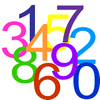list
Cubes
Interlocking cubes are a versatile resource in the mathematics classroom. They can support concept development, working mathematically and help children form mental images of numbers. There are two articles to read, the first of which offers use of guidance on manipulatives generally and the second explains why we have selected these particular tasks.

